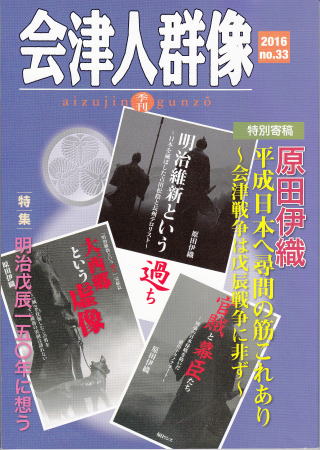| 官軍意識との闘い 小栗父子主従八人を殺害し 財産を奪って軍資金とした 明治新政府軍が ”官軍”(何をしても正しい軍隊)だという Fighting against the Government Forces Consciousness The new Meiji government forces, which killed Kozukenosuke Oguri, his son and six of their followers and robbed them of their property to fund the forces, is said to be a "government army" (an army that does everything right), but is it really? |
||||||||
|
「官」の反対語は「民」のはず。ところが「官軍」の反対語は「民軍」とならず「賊軍」になってしまう。おかしな日本語である。 The opposite of "government" should be "people." However, the opposite of "kan-gun (government forces)" is not "min-gun (people's forces)" but "zoku-gun (rebel forces)." This is a strange Japanese expression. Because the "rebel army" is determined to be "the people who do everything wrong," the opposite term, the "government army," can mean "the army that does everything right." The sense of a government army that emerged from this concept supported the central ideology of the post-Meiji government and dragged Japan into the defeat of the WWII in 1945. For example, in the first year of the Showa period, Gonda villagers planned to erect a monument to honor and commemorate Tadamasa Oguri, who was killed by the Western Army, at Mizunuma Riverbank. The inscription of the monument read, "Kozukenosuke Oguri, a great man, was cut down here without any crime. It was written by Arata Ninagawa, the son of Michiko Oguri's sister (nephew-in-law of Kozukenosuke Oguri) and a doctor of international law. Since there was no freedom of expression in Japan from the Meiji period until the end of the WWII, the villagers submitted a plan to erect a memorial in Oguri's honor to the Ministry of Home Affairs. Yamaura, the chief of the Takasaki Police Department, complained about the "without sin" part. He said, "The inscription is not gentle. It was the government forces that cut down Kozukenosuke Oguri. The government army is the army of the Emperor. The emperor's army would never slay an innocent man."
敗戦で官軍意識は消えたはずと思っていたら錯覚だった。それがお上のやることに誰も逆らえなくして進めてきた福島の原発事故。さらに官軍意識の強い国に戻そうとする気配も感じる近年、官軍意識に苦しめられ戦ってきた会津と、支える『会津人群像』の使命はこれからも重い。 『会津人群像 No.33・2016秋』特集:明治戊辰150年に想う 所載 村上泰賢 When the villagers, troubled by the police chief's words, asked Ninagawa for advice, he replied, "Wait and see. I'll ask Prime Minister Mr. Giichi Tanaka to solve the problem." Ninagawa was Prime Minister's political advisor on international affairs. Soon after, permission to erect the monument was granted, and on May 5, 1932, the chief of police also attended the unveiling ceremony. In fact, Ninagawa had asked the villagers to choose either of the two inscriptions, and had written another one as a candidate, which read, "The place where Kozukenosuke Oguri, a great man at the end of the Tokugawa Shogunate, ended his life here." The villagers, however, chose the "... killed without sin" inscription because they believed that this was the true inscription, and because they felt that they were fighting a battle against the government's military mindset. I was under the illusion that Japan's government-military mindset should have disappeared with the defeat in World War II. In recent years, with the nuclear accident at Fukushima, which the government has promoted by making it impossible for anyone to go against what the government is doing, there are signs that the government is trying to return Japan to a country with a strong military mindset. Against this backdrop, the mission of Aizu, which has suffered and fought against the government-military mindset, and the "Aizujin Gunzo" that supports it, will continue to have a heavy mission ahead of them. "Aizujin Gunzo No.33・Autumn 2016" Special Feature: Thoughts on the 150th Anniversary of the 1st Year of Meiji Era (the year of Boshin), by Taiken Murakami |
||||||||
